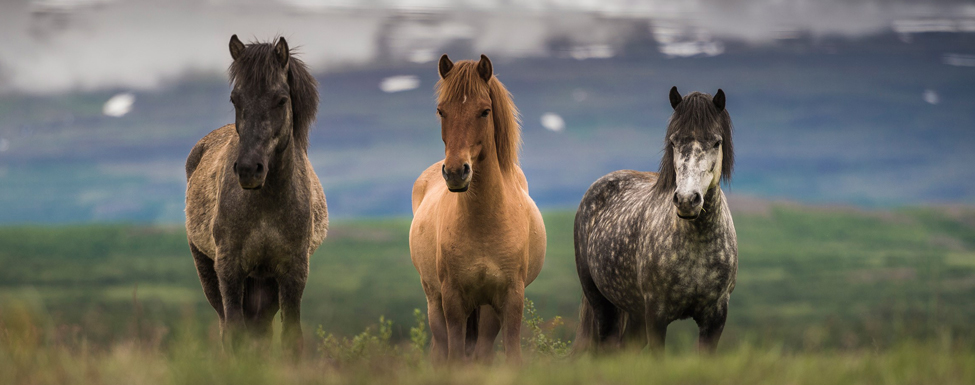Icelandic Horses
In the 900s Icelanders did two significant things: they established the Alþingi, the oldest extant parliament in the world, and then, about fifty years later, they closed the island’s ports to importation of animals, including horses.
That resolution has stood the test of time and no horse taken from the island can ever return - and certainly no foreign-bred horse need come calling. The result is a breed of horses directly descended from the Viking era.
The isolation in which the horse developed created a sturdy, friendly and willing horse that was integral to Icelandic society. That doesn’t mean it is unknown to the world, however. Horse-happy Iceland, where riding is the leading family sport, has exported its animals for centuries and today the breed is represented in many nations.
“Within a hundred miles of our farm there are so many Icelandic horses, you would be shocked,” said Thorunn Kristjansdottir of Claverack NY. “The Icelandic horse is very special and they’re like potato chips, you can’t have just one.”
Kristjansdottir should know. Descended from generations of horse people, she, her parents - Kristjan Kristjansson and Johanna Gudmundsdottir - and brother, Fridrik Kristjansson, moved to this country in the late 1980s, where her father worked with Dan Slott of Icelandic Sports, LTD, in Ancramdale NY.
The association continued until 2006 when the Icelandic family branched out on its own in Claverack, establishing Thor Icelandics. “We breed, raise, train, and show the horses - we kind of do everything on our farm,” she said.
The Icelandic horse predates the knights of old and the animal is smaller and lighter than European horses. “It became the Icelandic horse in Iceland, with its specific gene pool, while horses on mainland Europe changed,” said Kristjansdottir. “In Europe they needed larger horses for purposes like warfare, and in turn started breeding much larger horses, and so in turn they lost some of the gaits.”
But in Iceland, the horse was the mainstay of society. “It is harsh up there on that island in the North Atlantic, the growing season is short and people depended on their horses - the horse literally did everything from bringing the midwife to pulling the casket to the grave,” she said. Sturdiness and a good disposition, not size, mattered.
The “little” Icelandic horse was greeted at times with slight distain by owners of larger, American animals when it arrived in the US, Kristjansdottir said, but with its huge character and presence, sturdy legs, “limber, flexible and quick” carriage and its four or five gaits, it soon earned respect.
In addition to the usual walk, trot and canter/gallop, the Icelandic horse has a natural, four-beat lateral gait, known as the tölt, that is extremely smooth and comfortable. The five-gaited horses in the breed also have pace, some possessing what is called flugskeið, or "flying pace," used in races. Some horses can reach up to thirty miles per hour with this gait.
“Size has nothing to do with it,” said Kristjansdottir. “Which would you prefer to drive, a Suburban or a Porsche? Which would you have more fun with? These are performance horses - and you are never going to forget that ride.”
Thor Icelandics is located at 76 Catskill View Road, Claverack NY. For more information, call 518-929-7476 or click on the link below.


